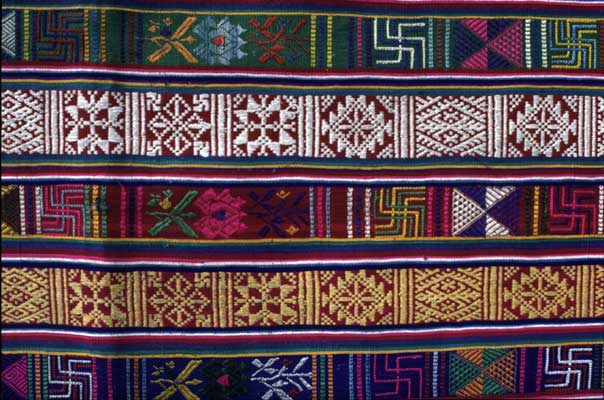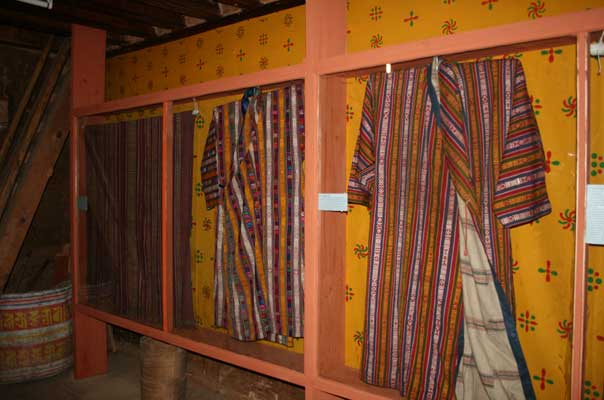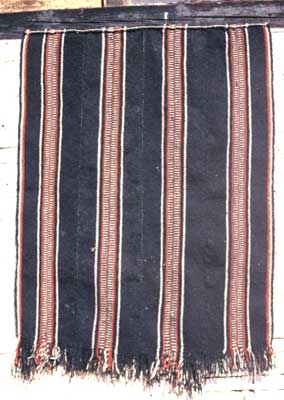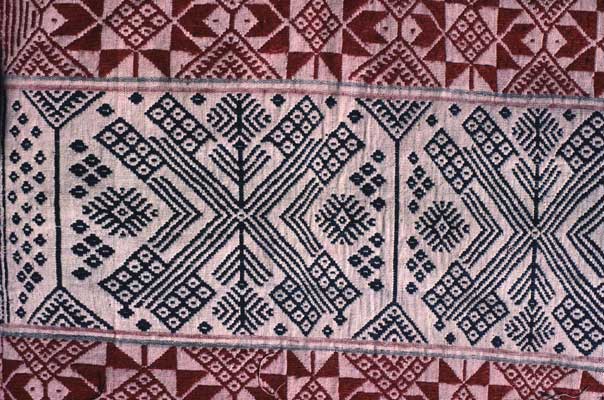Textiles
The use, meaning and symbolism of textiles in the traditional Bhutanese society was all encompassing. Far beyond fulfilling it's primary purpose as protection against cold; it enriched and furthered the social and political life of the people. Cloth was used for clothing and adornment, for religion and ritual, for trade, as taxes and gifts and were passed on as heirlooms. The production of cloth took the Bhutanese society beyond the margins of subsistence to levels of competitive and aesthetic development and to economic benefits. Cloth was the embodiment of the Bhutanese character; comprising of artistic skills, devotion, discipline, determination, pride, familial sentiments and histories. Cloth was a viable and legitimate form of asset in a society where money was virtually absent.
Cloth constitutes a vital component of our heirloom; whether stacked up in piles, rolled up, stitched into garments or other utilitarian items or for ornamental and ritualistic artefacts. They were valued as " Pha mai shuy" which literally translates into "what the parents leave behind." Heirloom cloths were mostly inherited in congenial ways; gifted, bought and exchanged. These cloths provided the family members a sense of assurance and security for they could hold on to them at all times.



